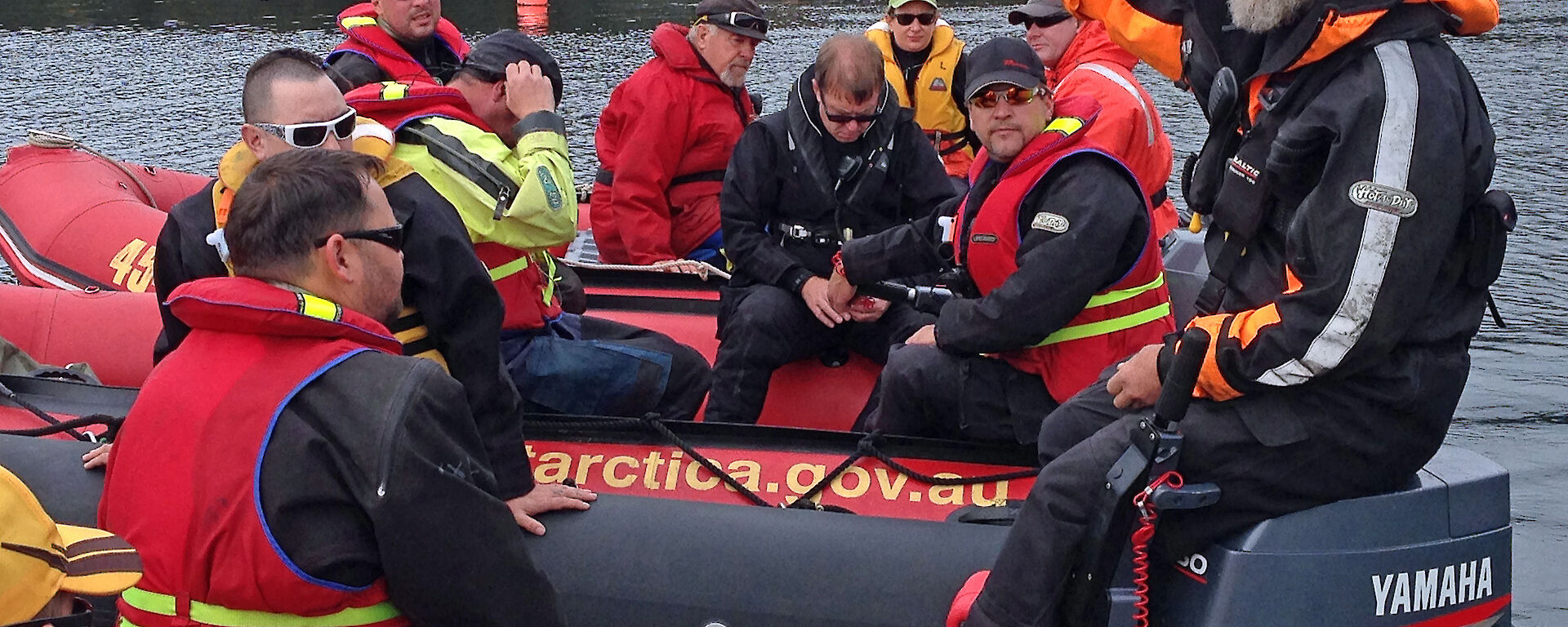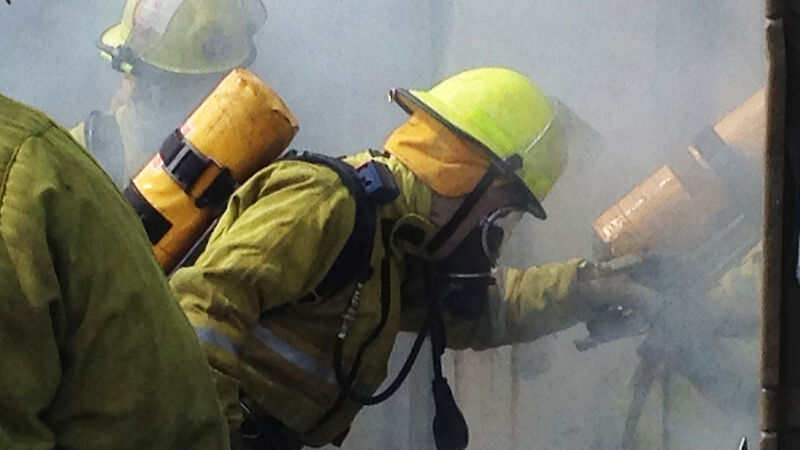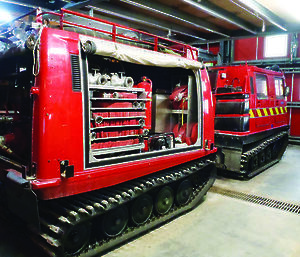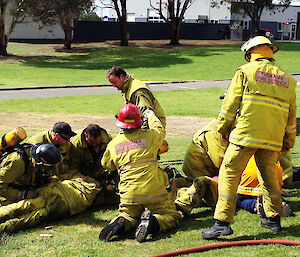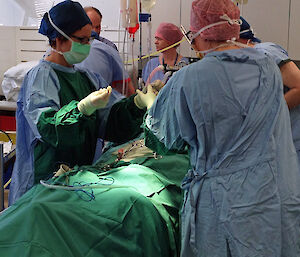Sterile zones, scalpels and sutures were the last thing boiler-maker Cliff Simpson-Davis expected to be boning up on before he took on his new role as a ‘tradie’ at Davis station this year.
But the Royal Hobart Hospital operating theatre is exactly where he found himself, undertaking lay surgical training during his pre-departure preparation with the Australian Antarctic Division in Hobart.
‘It was amazing to be able to participate in this totally alien medical world — even for just a short amount of time,’ Mr Simpson-Davis said.
‘We observed and learnt about a range of operating theatre procedures, including anaesthetics, patient care and handling sterile instruments.’
Even before the team started scrubbing up at the hospital, they had already made it through a rigorous recruitment process. Each year thousands of hopefuls apply to be part of the Australian Antarctic program, but only about 10% of these ever set foot on the ice.
The first step in the journey to become a wintering expeditioner is an online application, followed by a technical shortlisting. The Antarctic Division’s Human Resources Manager, Andrew Groom, said applicants need to meet a range of technical shortlisting requirements.
‘All expeditioners have to be generalists and possess a wide range of skills in their specialist area,’ Mr Groom said.
‘For example, there’s often only one electrician or plumber on station over winter. This means they need to be able to fix, build and trouble-shoot any issue that might arise.’
Once the Antarctic hopefuls are through the technical short listing, their personal qualities are assessed through a ‘selection centre’.
‘We bring a group of applicants together for a 24 hour assessment,’ Mr Groom said.
‘We run them through a series of scenarios and activities to assess personal qualities. We’re primarily looking at their awareness of their effect on others and how they manage that.’
The next stage of the application process is an adaptability assessment that focuses on how people deal with isolation and separation from loved ones, and living and working in a small isolated community. The final stage of the process is a rigorous medical examination.
‘The diversity of people on station makes it a fascinating place to work and we are looking for people who have the ability to adapt to those conditions and work as a united team in what can be challenging circumstances,’ Mr Groom said.
Once expeditioners have been chosen, they spend several months at the Division’s headquarters in Kingston undertaking intense pre-departure training. Here they learn all the skills they need to spend a year in the most isolated place on Earth, from search and rescue training, to boating and Hägglunds driving. The wintering crew also spend four days learning fire-fighting skills with TasFire Training.
TasFire Training Instructor Nigel Reid visited Australia’s Mawson, Davis and Casey stations to get a better understanding of the exceptional conditions surrounding fire-fighting on the ice.
‘Antarctica throws up some unique challenges. Not only do you have to contend with the usual heat, flames and smoke encountered in any blaze, but you also have the added issue of maintaining water supply, with hoses freezing in the extreme outside temperatures,’ Mr Reid said.
‘Additionally, the station buildings are designed for their thermal properties, with triple glazed glass and super-insulated walls, so breaking through this to escape or gain access to the fire is impossible.’
Each station has specially designed fire-fighting equipment loaded on a Fire Hägglunds, which is deployed in the event of a blaze.
‘We teach the expeditioners the essentials of fire-fighting; how to keep themselves safe, communications in a fire, the best way to enter a burning building, how to conduct a search for a missing person, and of course douse the flames,’ Mr Reid said.
‘It is an intense few days, but with ongoing training over winter, the expeditioners become quite competent and confident in how to deal with fire in Antarctica.’
Back at the hospital, Davis station wintering doctor, Jan Wallace, is coaching her new lay surgical team on the intricacies of the operating theatre.
‘Australia is one of the few Antarctic nations that train a small team of wintering expeditioners, with no medical experience, to act as lay surgical support staff,’ Dr Wallace said.
‘It can be quite confronting for doctors in Antarctica, as we are the sole medical practitioner expeditioners rely on over the long winter months. So it’s good to know that if there was a major emergency, there are others on station who can assist and give the doctor some support or respite if needed.’
As with tradies, all Antarctic doctors have to be generalists; able to perform routine general practice care, emergency surgery and even deal with dental problems. But the enormity of the task has not deterred Dr Wallace, who is heading south for her second Antarctic winter.
‘I don’t understand people who don’t want to go there. It’s one of the last big wild places on the planet; the vastness of the landscape is so alluring,’ she said.
‘The challenge of going down there and living and working is something I savour and I like to think that I’ve been lucky enough to be able to use my skill set as a doctor, to support something that is part of a bigger and grander picture.’
Nisha Harris
Corporate Communications, Australian Antarctic Division

